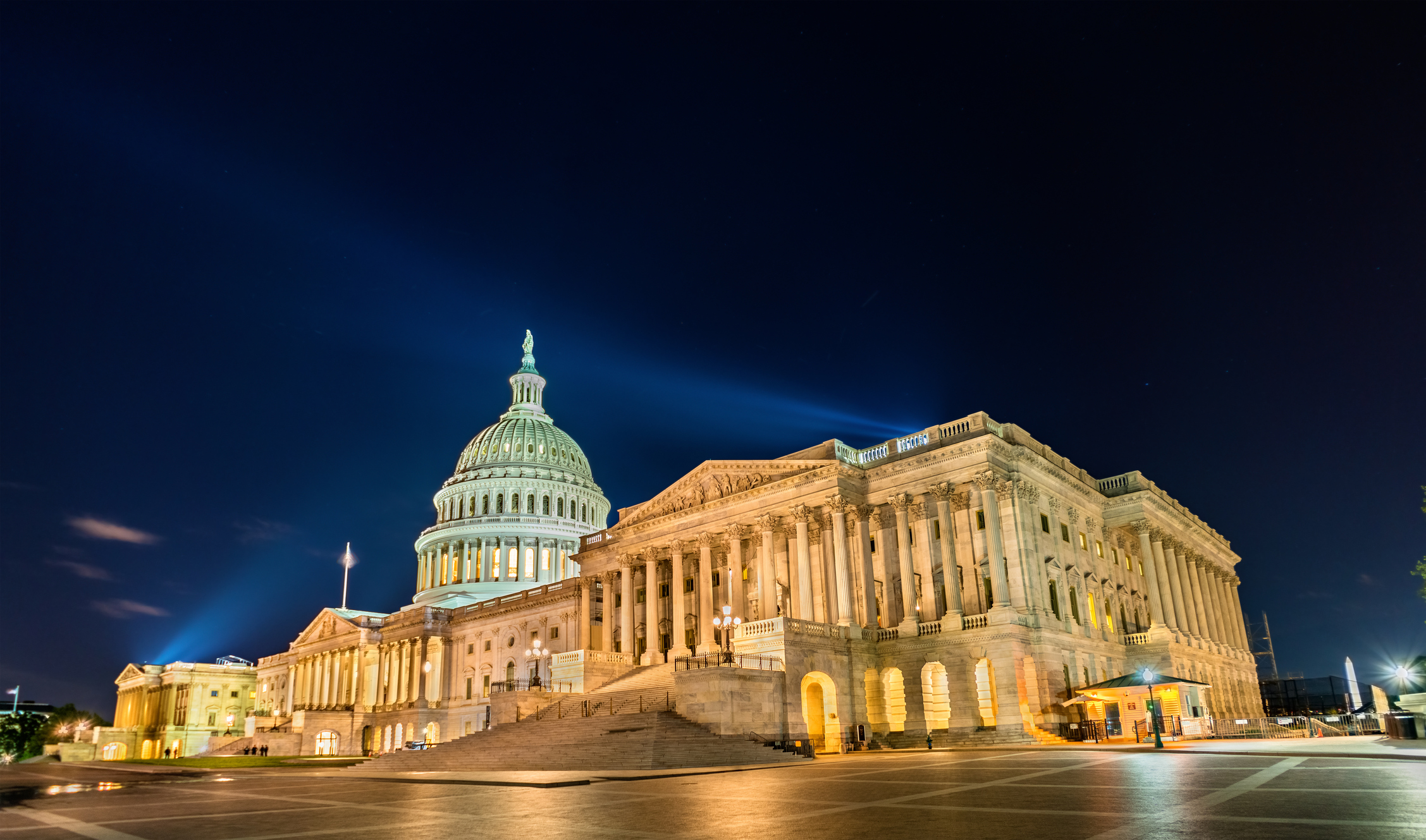Attack on the Capitol
Attack on the Capitol: Biden Takes Over a Country Torn Apart

Im Nordflügel des Kapitols in Washington sitzt der Senat
© Leonid Andronov / iStock / Getty Images PlusThe saga of the seemingly never-ending presidential election reached an inglorious culmination yesterday. Traditionally, the U.S. Congress' certification process for the election results is a dry and formal affair. But this year, the day will go down in U.S. history as one of the most tumultuous days in U.S. domestic politics.
That morning, after the results of two runoff elections in the state of Georgia made it clear that Democrats were regaining control of the U.S. Senate, President Donald Trump, who suffered a final humiliation in that election, urged his supporters gathered in Washington, D.C. not to accept defeat. After encouraging his fans to march to the Capitol, where Congress was meeting to vote on certifying Biden's victory, crowds of angry protesters loyal to Trump stormed the Captiol Building. The mobs overran security forces, who had not adequately prepared for such an onslaught.
In doing so, they forced a halt to the certification process and the evacuation of Vice President Mike Pence and all members of the House and Senate. Only after the situation escalated did Trump finally call for peace. Never before in America's modern history has the peaceful transfer of power turned into a physical confrontation inside the corridors of the Capitol in Washington. It is shocking, but no surprise that a presidency that fueled four years of animosity and division ended in such an explosion of anger and violence.
In the hour and a half before the storming of the Captiol, Trump's Republican allies, as expected, sought to challenge Biden's election victory. At least four Republican senators - Ted Cruz of Texas, Josh Hawley of Missouri, Kelly Loeffler of Georgia and Tommy Tuberville of Alabama - joined House members to challenge the results of three contested states that Biden clearly won: Arizona, Georgia and Pennsylvania. Senate Majority Leader Mitch McConnell, on the other hand, spoke out forcefully against the Republican push to overturn the election. Vice President Mike Pence, who has been pressured by Trump to unilaterally nullify the election results, also said before the meeting that he would defend the U.S. Constitution, not Trump.
Although their efforts will ultimately fail, the Republicans involved may ensure that the political theater drags on much longer than usual. Their objections have the potential to drive further sharp wedges into the Republican Party, causing lasting damage to its cohesion. Their plan to hijack a typically mundane ceremonial exercise, in particular, could also potentially be crucial to their political chances in 2024. And while the objection process won't change the election outcome, it shakes many Americans' faith in democracy and further delegitimizes Biden's presidency in the eyes of voters aligned with Trump.
At the same time as the certification process was underway on the east end of the National Mall, pro-Trump demonstrators were marching through the nation's capital in a planned show of force to attempt to undo Biden's victory. As he continues to fight to overturn the legitimate election results, Trump himself has repeatedly promoted the protests and encouraged his supporters to travel to Washington, D.C.
The scene that unfolded as early as Wednesday morning in the park directly behind the White House was extraordinary. A large grandstand was erected, huge loudspeakers were attached to tall scaffolding, and thousands of chairs were unfolded in front of demonstrators to declare victory for a president who clearly had lost in November. "We will never give up. We will never concede victory in the election. It's not going to happen," Trump told a gathering of enthusiastic supporters on Wednesday. Then, at 2:15 p.m., while the House and Senate debated, the Capitol was sealed off after angry pro-Trump demonstrators stormed past barricades and police officers. It took some time to remove all the intruders from the building and finally resume the joint session. Police from surrounding states and the National Guard were activated and helped restore security.
President Trump issued a brief statement, in which he reiterated his unwarranted attacks on the election results, stressed once again that a clear victory had been "stolen" from him and his supporters, declared that he "loved" the protesters but had at least asked them to go home. Earlier, his successor, Joe Biden, addressed all Americans with a message of unity and the core values of American democracy, strongly condemning the storming of the center of the democracy and also stressing that the challenges of the coming period can only be met together.
The extraordinary day in Washington exposed deep divisions both between the two parties and within the Republican Party. The violent clashes between police and pro-Trump demonstrators underscore a grim reality for Biden: He will inherit not only a country beset by a pandemic and an economic crisis, but also a political fabric that has been torn and divided by Trump in unprecedented ways over the past four years.
